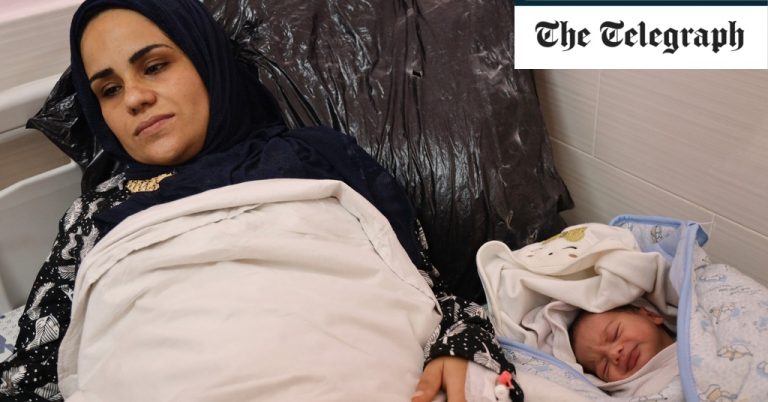One woman, Maha from northern Gaza, told Ms Rogeret that she rushed to the closest hospital when she went into labour, but couldn’t be treated as all the delivery rooms were full.
“She knew something wasn’t right, that she needed to be admitted. She had had a C-section before, but with no option [available at the hospital], she had to go back to her tent,” she said.
“Her son died. She gave birth to him in the latrines closest to her tent … Without this war, she would not have lost her son.”
Out of Gaza’s southern hospitals, just nine remain functional, but these are operating at three times their capacity, with occupancy rates reaching 206 per cent in patient departments and 250 per cent in intensive care units, according to the Hamas-run Ministry of Health.
In the north of the enclave, where access to aid and maternity services is extremely limited, the situation for mothers and newborns remains perilous.
In the first two weeks of January, aid distributors planned 29 missions to deliver life-saving supplies to areas north of Wadi Gaza. Yet only seven of these missions were completed, either fully or partially. The remaining missions were denied access by the Israeli authorities, according to OCHA.
The partially functional Al-Awda hospital is the only provider of maternity services in the north. Staff are continuing to deliver babies and carry out caesareans despite the severe shortage of medical supplies, fuel, food and water.
